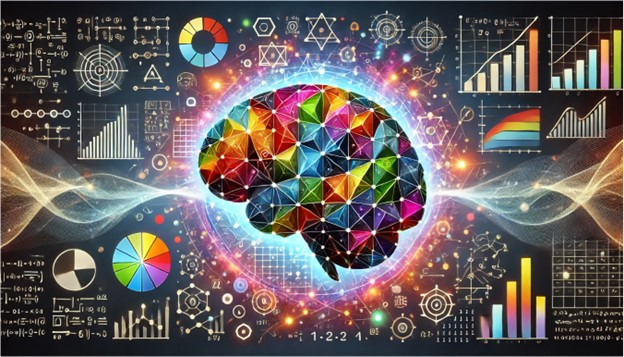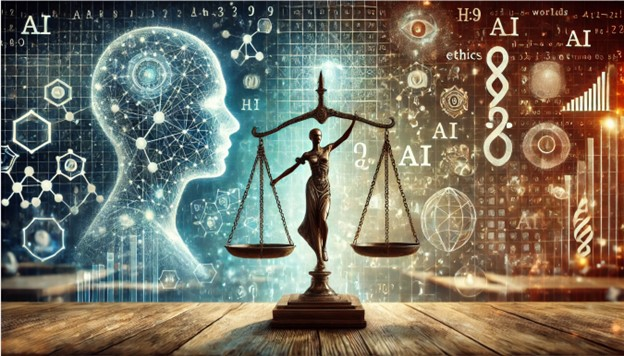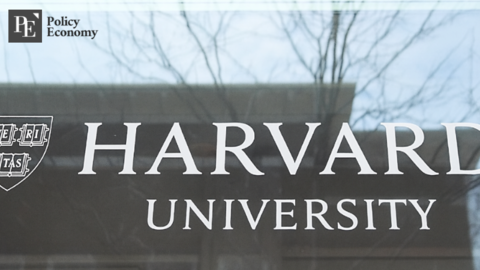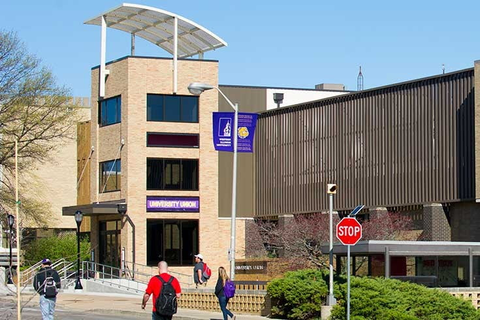From Calculus to Code: How Math Is Powering the AI Classroom Revolution
Input
Modified
Math Meets Machine Learning in Real-World Classrooms Do You Really Need Advanced Math to Work in AI? Building a Math-Literate Generation for the AI Age

Math Meets Machine Learning in Real-World Classrooms
A group of seniors gathers in a classroom at Franklin High School, located near Sacramento, California, to predict the number of survivors of the Titanic disaster. They are surrounded by laptops and datasets. Clayton Dagler, their instructor, is not conducting a history lesson. Therefore, he is guiding them into the realm of artificial intelligence (AI) by employing a novel and unexpectedly captivating perspective: mathematics.
Dagler's machine-learning course is anything but ordinary. In this context, students are not merely programming; they are also employing statistical models to analyze real-world data. They are identifying cancerous cells, detecting spam emails, and determining whether mushrooms are toxic. These challenges are not merely academic exercises; they are the same ones that AI professionals confront in a variety of sectors, including cybersecurity and healthcare.
The course was the result of a conversation between Dagler and a parent, an executive at Apple, who emphasized the increasing significance of big data. Dagler developed a curriculum that demystifies AI for his students by integrating Python programming with statistics and probability. This approach was inspired. "I desire for them to develop the materials that we require for the future," Dagler declares.
Educators who are seeking to enhance the relevance of mathematics in a technologically driven era are increasingly adopting his methodology. And as AI continues to permeate nearly every facet of society, comprehending the mathematics that underlie it is no longer merely advantageous; it is indispensable.
The experience has been transformational for students such as Pratham Rangwala. Dagler's course was more meaningful to Pratham after he completed Advanced Placement (AP) Statistics, as it applied statistical theories to real-world problems. Students execute machine-learning models that necessitate comprehension of regression analysis, probability distributions, and even Naive Bayes classifiers, as opposed to resolving abstract equations.
Pratham asserts that the task extends beyond the resolution of textbook problems. "This is addressing real-world issues."
Mathematics is also being used by other educators to bring AI to life. Andrew Smith, a computer science instructor in Woodstock, Vermont, employs probability and geometry to elucidate the operation of AI systems. He instructs his students to construct spam filters, simulate hiring algorithms, and even program a version of the game "Nim" in order to comprehend the process by which AI enhances itself over time through statistical probability.
“The majority of students believe that AI is a form of magic,” Smith asserts. "However, when you demonstrate that it is merely mathematics beneath the surface, it becomes crystal clear." They become enthusiastic because they recognize that they are capable of accomplishing this task as well.
Nearly every artificial intelligence system is powered by mathematical concepts that are the foundation of these lessons:
Linear Algebra: It serves as the foundation for the management of high-dimensional data by utilizing vectors, matrices, and tensor operations. Linear algebra is the foundation of data representation and manipulation, regardless of whether it is used for image recognition or natural language processing.
Calculus: Is particularly essential to optimization, as it is employed during the training phase to modify model parameters. Derivatives and gradients are concepts that assist algorithms in learning by minimizing errors over time.
Probability and Statistics: These tools enable models to evaluate risk, make predictions, and operate in the presence of uncertainty. Their importance is fundamental to statistical learning, Bayesian networks, and classification tasks.
Optimization Methods: In resource allocation, logistics, and operational AI systems, advanced techniques such as Lagrange multipliers and linear programming are employed in addition to gradient descent.
Graph Theory: Graph theory is essential for the modeling of relationships and networks and is implemented in social media algorithms, web search engines, and recommendation systems.
Students in these math-AI courses are not merely acquiring theoretical knowledge; they are also implementing it through collaboration, experimentation, and coding. In the same manner as real-world data scientists, they construct models, test them, resolve inaccuracies, and iterate.

Do You Really Need Advanced Math to Work in AI?
Whether advanced mathematics are required to pursue a career in artificial intelligence is a frequently asked query among novices. The discourse is animated on platforms such as Quora. Some users contend that individuals who are responsible for the development of novel algorithms are the only ones who require a high level of mathematical expertise. Some argue that mathematics is beneficial; however, numerous professionals effectively implement AI tools without delving into the theory.
What is the general agreement? It is contingent upon your position.
A profound comprehension of probability, linear algebra, and calculus is indispensable for individuals who are engaged in AI research or the development of custom models. However, a basic understanding of fundamental concepts may suffice when employing pre-built tools for software development, marketing, or business analytics.
However, users are able to make more informed decisions when they possess even a rudimentary comprehension of the mathematics that underpin AI. Eric Greenwald, a researcher at UC Berkeley, observes that students can be more critical about the recommendations made by AI systems, such as Spotify playlists and hiring algorithms, by comprehending probability and statistics.
Greenwald even advocates for the introduction of these subjects to children as young as seven. He asserts that children would be significantly more inclined to participate in and contribute to AI if they were taught about probability at the age of seven rather than at the age of seventeen.
In fact, his research demonstrates that the reinforcement of statistical reasoning is facilitated by the use of technology that students are already familiar with, such as music recommendation algorithms or smart assistants, when engaging with math. Students acquire proficiency in probability by resolving pertinent problems, which does not resemble abstract mathematics.
This approach faces a significant challenge in terms of scalability due to the scarcity of educators who are proficient in both mathematics and computer science. Additionally, schools encounter challenges in accommodating specialized electives such as Dagler's in their already overcrowded schedules. However, the results are compelling when it is functioning properly.
Dagler's machine-learning course has expanded from 17 students to two complete sections of 36 in a matter of years. In addition to acquiring technical skills, his students also cultivate a more profound understanding of the ways in which AI can either amplify or reflect biases. For example, students are advised to investigate potential unintended consequences when developing hiring algorithms. Did their model penalize applicants with lesser GPAs who possessed substantial work experience? Did it prioritize candidates from specific educational institutions? These lessons are not solely mathematical; they are also ethical.

Building a Math-Literate Generation for the AI Age
Andrew Smith is of the opinion that the most effective method of engaging pupils is to frame math problems through the lens of justice. He quips, "No offense to watermelon salespeople, but math becomes significantly more engaging when students observe who may be negatively affected by the construction of a model."
Other educators throughout the nation are conducting comparable experiments with AI-infused math instruction. Some are integrating courses on algorithmic fairness, in which students are taught how even minor mathematical decisions can have significant repercussions. Others are employing AI tools as instructional aides, enabling students to interactively visualize data trends, distributions, and functions.
Coursera and other online platforms are also adapting to facilitate this integration. Learners can now access AI courses that are beginner-friendly and emphasize fundamental math concepts through visualizations, practical labs, and quizzes. For example, IndoAI recommends a phased approach: Begin with linear algebra and calculus, then investigate statistics, and ultimately apply the knowledge acquired through tools such as Scikit-Learn and TensorFlow.
As AI becomes increasingly incorporated into daily life, the necessity for a mathematically literate populace is increasing, ranging from autonomous vehicles to smart assistants. However, in addition to fostering technical proficiency, the study of the mathematics that underpins artificial intelligence fosters a more profound form of literacy, which allows individuals to inquire about the rationale behind a system's decision-making.
Students who may not pursue careers as AI engineers still derive advantages from comprehending the functionality of these instruments. They will be more prepared to challenge the systems that shape their world and better equipped to comprehend them, regardless of whether they pursue a career in medicine, law, commerce, or the arts.
In summary, comprehending mathematics is not solely contingent upon passing examinations. The objective is to uncover the underlying logic of one of the most potent technologies of our era.
A growing number of students and educators are already embarking on the voyage from calculus to code.





















